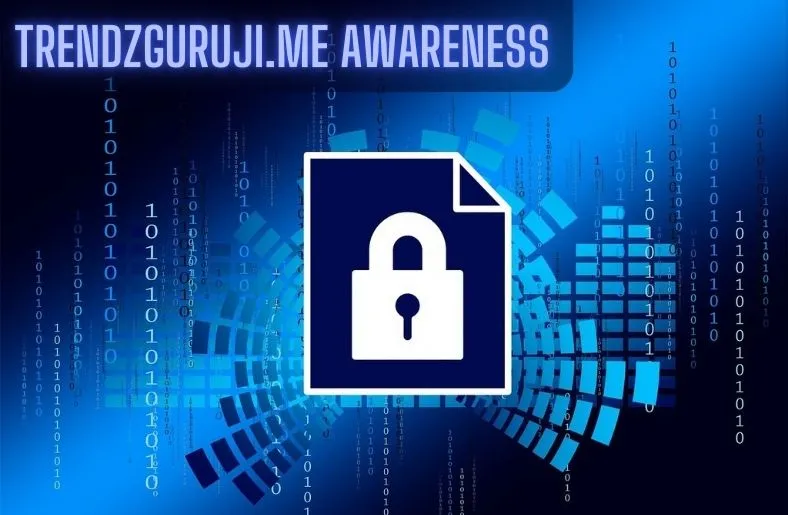In today’s digital landscape, Cñims stands at the forefront of security innovation, safeguarding our online assets. As cyber threats evolve, understanding the significance of cybersecurity becomes paramount for individuals and businesses alike. Read the complete blog post to explore Cñims.
I. Understanding Cñims
Cñims, or Cognitive Neural Information Management Systems, represent a pivotal advancement in digital security. These systems combine artificial intelligence and machine learning to emulate human cognitive functions, ensuring robust protection against cyber threats. By comprehending their definition and significance, users grasp the transformative potential of Cñims in fortifying data security.
Exploring the intricate mechanisms behind it reveals their dynamic capabilities, from real-time monitoring to predictive analysis. Moreover, understanding the role of Cñims in enhancing data security underscores their significance in safeguarding sensitive information against unauthorized access and cyber attacks.
II. Exploring Hash Functions
Hash functions serve as essential tools in cybersecurity, converting data into unique strings of characters. Their significance lies in their ability to create irreversible representations of data, enhancing security measures.
Examples like Cñims demonstrate their effectiveness in protecting sensitive information. By introducing a layer of complexity, hash functions ensure data integrity and confidentiality. Understanding the role of hash functions in cybersecurity is paramount for safeguarding digital assets.
As technology evolves, the importance of hash functions in mitigating cyber threats becomes increasingly evident. Their reliability and versatility make them indispensable in ensuring the integrity of digital information.
III. Decrypting Hash Functions
Decrypting hash codes involves unraveling the unique strings generated by hash functions. However, this process presents challenges and limitations. Hash functions are designed to be irreversible, making decryption nearly impossible. Despite advancements in technology, decrypting hash functions remains a formidable task. The complexity of hash algorithms adds another layer of difficulty. Additionally, brute force attacks, where every possible combination is tried, are time-consuming and resource-intensive. Moreover, hash functions like Cñims employ robust encryption techniques, further complicating decryption efforts.
IV. Evolution of Security with Cñims
From ancient locks and keys to sophisticated digital fortresses, security has evolved dramatically. Cñims represent a paradigm shift in safeguarding our digital lives. Their role in shaping the future of security is pivotal. By leveraging advanced algorithms, it offers unparalleled protection against cyber threats.
The benefits of utilizing Cñims are manifold, including enhanced data security and streamlined operations. They empower organizations to stay ahead of emerging threats and adapt to evolving security challenges. As technology progresses, the importance of Cñims in fortifying our digital defenses will only continue to grow.
V. Applications Across Industries
Cñims revolutionize various sectors, starting with healthcare. They streamline patient data management, ensuring privacy and compliance. In finance, it act as vigilant guardians, safeguarding transactions and thwarting fraud attempts. Beyond these sectors, it finds application in telecommunications, manufacturing, and more. Each industry benefits from the advanced security measures Cñims provide. They empower businesses to enhance efficiency and maintain the integrity of their operations.
As organizations across different sectors embrace Cñims, they unlock new possibilities for innovation and growth. The versatility of Cñims makes them indispensable tools in today’s digital landscape, offering tailored solutions to diverse security challenges. With Cñims at the helm, industries can navigate the complexities of data management with confidence and resilience.
VI. Practical Applications of Cñims
Cñims have numerous practical applications in modern cybersecurity. They play a crucial role in password storage and authentication processes, ensuring secure access to sensitive information. Additionally, they are instrumental in data verification and integrity maintenance, guaranteeing that information remains unaltered during transmission. These applications demonstrate the versatility and effectiveness of Cñims in safeguarding digital assets.
VII. Role of Users in Cñims Ecosystem
Users play a pivotal role in the Cñims ecosystem by contributing to its effectiveness and impact. User education and awareness are critical aspects that empower individuals to understand and utilize Cñims effectively. By educating themselves about cybersecurity best practices, users can enhance their role as guardians of data.
Additionally, empowering users as guardians of data involves providing them with the necessary tools and knowledge to protect their information actively. Through collaboration and education, users can maximize the benefits of Cñims and contribute to a safer digital environment.
VIII. Collaborative Partnerships in Cñims Development
Collaborative Partnerships in Cñims Development: Collaboration is vital for innovation in Cñims development, fostering creativity and problem-solving. Partnerships enable continuous improvement by leveraging diverse expertise and resources. Through collaboration, stakeholders pool their knowledge and insights to address complex challenges and drive progress.
These partnerships facilitate knowledge sharing and cross-pollination of ideas, leading to breakthroughs in Cñims technology. By working together, organizations can accelerate the pace of innovation and stay ahead of evolving cybersecurity threats.
Partnerships foster a sense of collective responsibility and ownership, ensuring that Cñims development aligns with industry best practices and standards. Overall, collaborative partnerships are instrumental in shaping the future of Cñims and enhancing digital security for all.
IX. Challenges and Future Trends
Addressing Challenges in Cñims Adoption
As organizations embrace Cñims, they encounter various challenges in adoption and implementation. These challenges include cybersecurity vulnerabilities, privacy concerns, and ethical implications. Ensuring user privacy and preserving data integrity are still top priorities when deploying Cims.
Anticipated Trends and Developments
Looking ahead, the future of Cñims is filled with exciting possibilities. Anticipated trends include the seamless integration of Cñims with IoT devices, enhancing interconnected systems’ capabilities. Furthermore, advancements in natural language processing promise to improve its ability to comprehend and interact with human language, leading to more intuitive user experiences. Ensuring user privacy and preserving data integrity are still top priorities when deploying Cims.
Ensuring Responsible Development and Ethical Considerations
In the pursuit of innovation, it’s essential to prioritize responsible development and ethical considerations in Cñims. This involves upholding principles of transparency, fairness, and accountability throughout the development lifecycle. By addressing these considerations, organizations can ensure that it contribute positively to society while minimizing potential risks and ethical dilemmas.
Conclusion
Cñims play a crucial role in advancing cybersecurity by providing robust, adaptive solutions for data protection. As we look ahead, embracing these technologies with confidence is vital. it continuous evolution promises enhanced security and efficiency across industries. Therefore, leveraging it is essential for creating a safer digital landscape. By adopting it, organizations can ensure data integrity, prevent breaches, and build trust. The future of cybersecurity depends on the widespread implementation of these advanced systems. Let’s commit to using Cñims to safeguard our digital world, ensuring a secure and resilient future for all.





